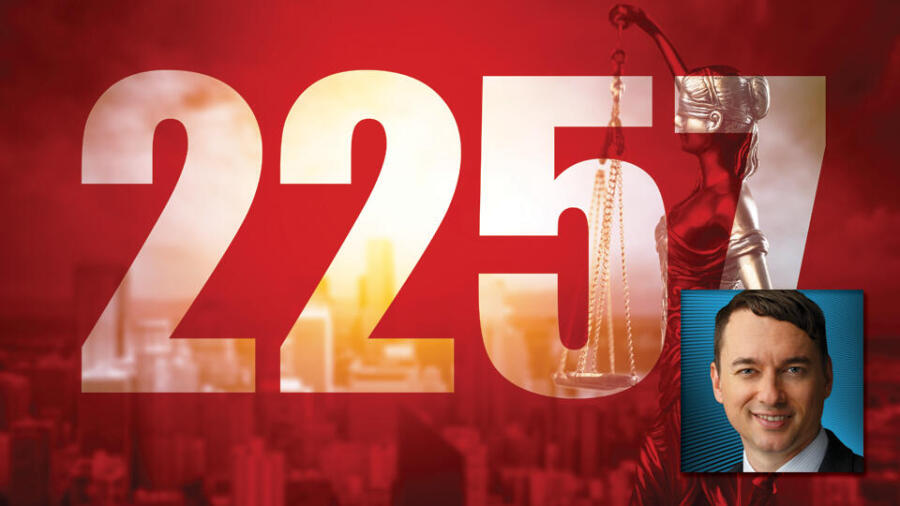The Netflix documentary “Money Shot: The Pornhub Story” has sparked a debate about the consequences of Section 230 of the Communications Decency Act and its impact on the adult industry, particularly in light of the negative influence that the Fight Online Sex Trafficking Act (FOSTA) has had on content creator revenue and sex worker safety. However, most recent debate on this matter overlooks a key potential solution.
In this article, we will break down Section 230 and 2257 regulations, and explore how the existing legal framework of 2257 can offer both platforms and content creators a more compliant, stable and secure environment. This overlooked approach is 2257 self-certification.
In a 2257 self-certification system, content creator platforms would still need to take reasonable steps to ensure that the records submitted by content creators are accurate and complete.
Section 230: A Tenuous Legal Shield
Section 230 is part of the 1996 Communications Decency Act. It provides online platforms with immunity from liability for content posted by third-party users, treating them as distributors rather than publishers. This has allowed platforms like Facebook, Twitter and YouTube to thrive, but has also allowed tube sites to host user-generated content without fear of legal repercussions, even when that content may violate copyright or other laws.
In 2018, FOSTA was passed. It amended Section 230 by removing liability protection for platforms that knowingly assist, facilitate or support sex trafficking — though often in vaguely interpreted ways. This significantly weakened the protections offered by Section 230, leading payment processors to withdraw their services from some adult websites and forcing content creators using those platforms to seek alternative revenue sources.
2257 Regulations: A More Solid Foundation
Section 2257, on the other hand, is a set of regulations for the adult industry established in 1988, nearly a decade before Section 230, for the express purpose of preventing the exploitation of minors in adult content.
Under 2257, adult content producers must maintain records verifying the age and identity of performers, as well as make these records available for inspection by law enforcement. Payment processors prefer working with companies that adhere to 2257 regulations, as this reduces the risk of being associated with illegal content. Studios have long enjoyed stable, secure relationships with payment processors as a result of strictly conforming to 2257 regulations.
Introducing 2257 Self-Certification
The documentary “Money Shot” suggests that FOSTA’s impact on Section 230 created a no-win situation for content creators, but it fails to mention how existing 2257 regulations could provide a solution.
If the creator platform unit of the company in the documentary had maintained an arm’s-length relationship with its tube site branch and was structured around 2257 compliance, it could have potentially avoided the consequences that ensued. Then the platform could have potentially continued operating and processing transactions, as its most well-known studio brand eventually was allowed to.
The solution lies in content creators complying with 2257 regulations themselves, through a self-certification process whereby they take on both the role of the producer who creates the content and of the custodian who maintains the records. This would help ensure the 2257 compliance of platforms and reduce liability for payment processors.
How 2257 Self-Certification Would Work
From a content creator’s perspective, the self-certification process would involve several steps to ensure compliance with 2257 regulations. Here’s an outline of how it might work:
1) Registration: When content creators register with a platform, they need to provide their legal name, date of birth and contact information. This information would be stored securely on the platform and only be accessed for 2257 compliance purposes.
2) Uploading content: When uploading a new piece of content, the creator is required to provide 2257-related information for each performer featured in the content. This information includes the relevant performer’s legal name, date of birth and a copy of their government-issued identification.
3) Self-certification: After providing the necessary information for each performer, the content creator then certifies that the information is accurate and complete. By self-certifying, the content creator takes on the role of both the producer and the custodian of records, assuming responsibility for the accuracy of the information provided.
4) Content review and approval: The platform reviews the content and the accompanying 2257 information to ensure compliance with regulations. If the platform finds any issues, it notifies the content creator and requests the necessary corrections before the content is made available to users.
5) Record-keeping: The platform securely stores the submitted 2257 records and ensures they are easily accessible in case of an audit or investigation. The platform also maintains a log of audits and compliance checks.
6) Ongoing compliance: As the content creator continues to upload new content, they follow the same procedure for each piece, ensuring all 2257 requirements are met. The platform then periodically audits a representative sample of the records to verify their accuracy and completeness.
7) Content takedown and sanctions: If any content is found to be non-compliant, the platform promptly removes it and notifies the content creator. Repeated violations could lead to sanctions, such as suspension or termination of the content creator’s account.
Responsibilities of Content Creator Platforms
In a 2257 self-certification system, content creator platforms would still need to take reasonable steps to ensure that the records submitted by content creators are accurate and complete. The determination of what constitutes “reasonable steps” will depend on the specific circumstances and practices of each content creator platform. However, some examples of reasonable steps could include:
- Establishing clear policies and procedures for content creators to follow when creating and submitting 2257 records, including the required information and format.
- Providing training and education for content creators on the importance of accurate and complete 2257 records, as well as the consequences of non-compliance.
- Conducting periodic audits or spot checks of a sample of 2257 records to ensure their accuracy and completeness.
- Implementing technical tools or software to verify the authenticity of 2257 records, such as digital signatures or blockchain technology.
- Maintaining clear and complete documentation of all steps taken to ensure the accuracy of 2257 records, including any training, audits or technical measures implemented.
Conclusion
The documentary “Money Shot” highlights the challenges faced by content creators due to the uncertainties surrounding Section 230, yet it fails to consider the potential benefits offered by the existing 2257 regulations. Platforms can create a more stable environment for both content creators and users by embracing a 2257 self-certification model that lets content creators assume responsibility for their own compliance.
This approach mitigates risk for all parties involved, from users to content creators, platforms and payment processors, fostering a more responsible and flourishing adult industry.
Disclaimer: The author of this article is not a lawyer, and the information provided herein should not be considered legal advice. The opinions and views expressed in this article are solely those of the author and do not necessarily reflect the opinions or views of their employer. Always consult a legal professional for specific advice.
Ian Paul, the chief information officer of Naughty America, is a veteran in the adult entertainment industry who pursues technology innovation, while also advocating for responsible content creation, online safety and industry-wide compliance measures.







